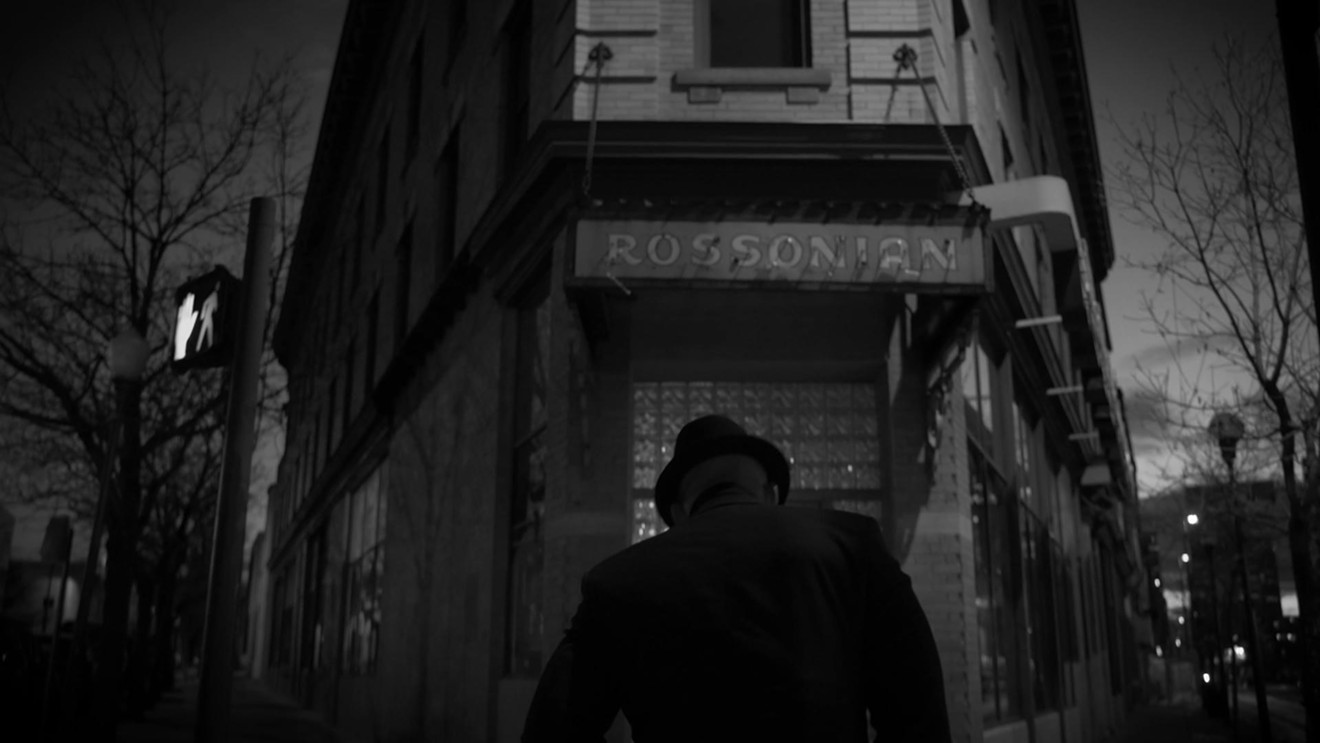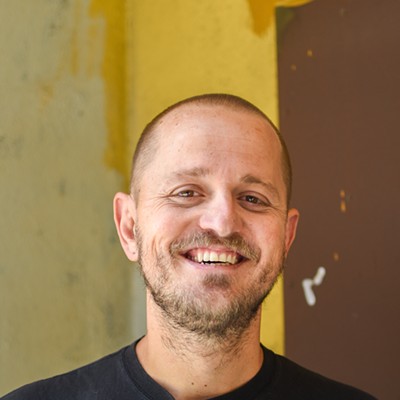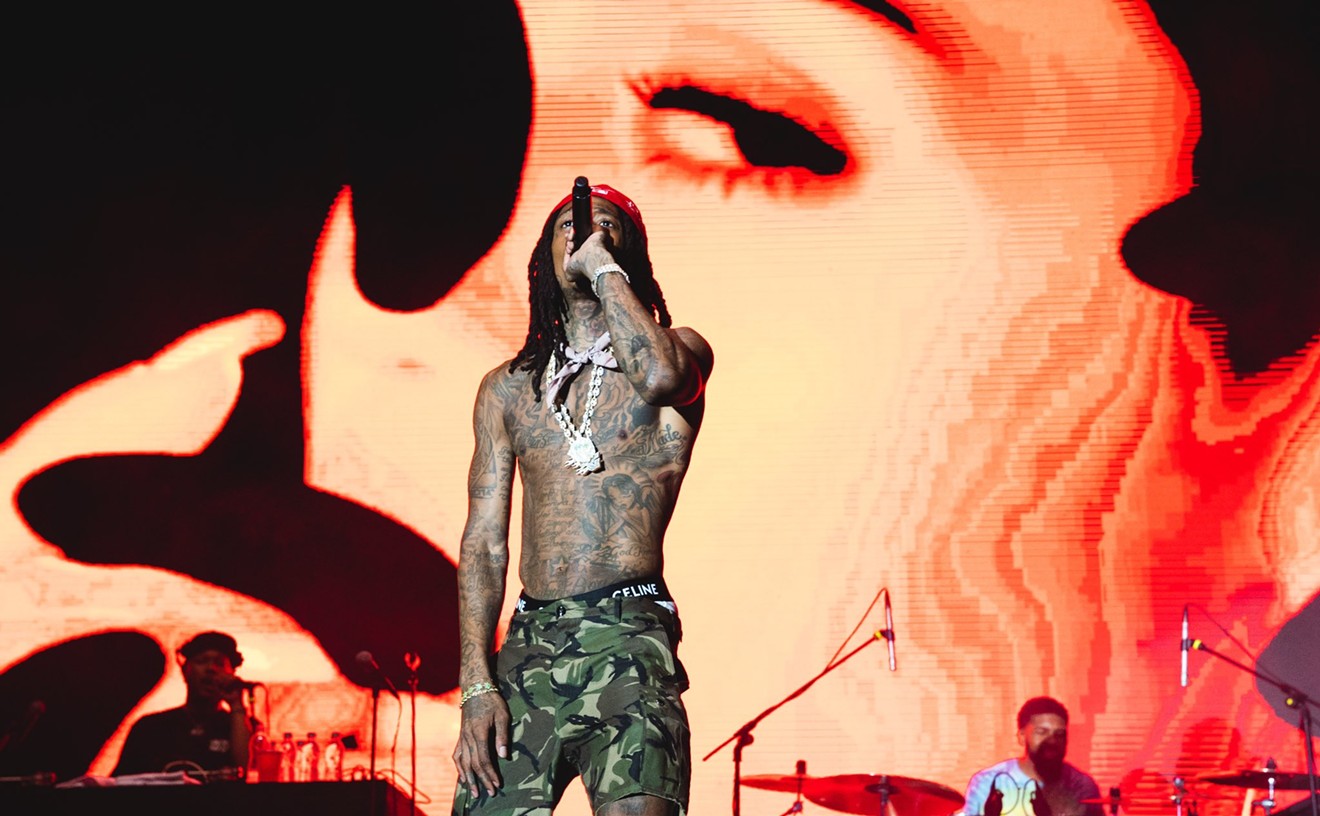Ten Denver musicians watched their breath rise on a cold December night as they walked into the Rossonian Hotel, bundled up and ready to perform for the camera. The long-shuttered building in Five Points was as cold as a catacomb. The holidays were coming, and the pandemic was spiking.
Some of the musicians — rappers Ramond and A Meazy; singers Sydnie Battie, Kid Astronaut and J Loryn; violist Valerie Reives; keyboardist Carter; guitarist Kelechi Onyebuchi; percussionist Kagiso and saxophonist Josue HC — hadn’t played a concert in nearly a year.
Ramond had invited them all to participate; most had never met until the night before, when they practiced together for the first time. At that rehearsal, the music came together quickly, the singers nailing their harmonies, the rappers hitting their beats flawlessly, and the instruments tying it up.
The artists were thrilled to be taking a break from social isolation to perform three songs — “Bright Side,” “Gladiators” and “Reign” — from the 2019 Black Sands film soundtrack that Ramond had produced. The largely acoustic performances would be videotaped in one shot and recorded in one take by Unwrapt, a music-video production company.
“To come together for this project, it felt bigger than all of us,” recalls Ramond. “And everybody was excited to jam off each other.”
Most of the musicians are in their twenties and thirties and had never been inside the Beaux Arts-style hotel, which was built by George Louis Bettcher and opened in 1912. They knew little about its history, either: a story of Black cultural resilience in the shadows of Denver’s white-supremacist political machine.
From the 1920s through the ’50s, touring Black musicians were refused service at downtown hotels, so they stayed at the Rossonian when they came through town. The first-floor lounge lit up with some of the greatest music this country has produced, even as the city was marred by Ku Klux Klan-affiliated leadership and a segregationist sensibility. Jazz greats like Duke Ellington, Nat King Cole, Count Basie, Billie Holiday and Ella Fitzgerald made stops at the hotel. In those years, Five Points was dubbed the “Harlem of the West,” and the Rossonian became the hottest jazz destination between Chicago and Los Angeles.
But in later decades, the neighborhood’s economy withered. The building fell into disrepair as owner after owner took it over with promises of renewal that ultimately fell through. In 1995, the Rossonian was recognized as a National Historic Landmark, but another two decades passed before a viable plan was proposed for the future of the structure.
Before the pandemic hit, developers with Palisade Partners announced that they would be revitalizing the Rossonian. They teamed up with basketball superstar Chauncey Billups, who grew up in Five Points and Park Hill; he's supposed to open a restaurant and lounge on the ground floor. If the rest of the plans come to fruition, there will be a jazz club in the basement and hotel rooms upstairs. The project will give a nod to the building’s history as a cultural hot spot for the African-American community, and the developers will work with longtime neighbors to ensure that it becomes what the current community needs.
For some of these up-and-coming Denver musicians on that cold December night, the old building was the stuff of legend; for others, it was a complete unknown.
“I knew a little bit about it, but to be honest, I didn’t know the full scope,” says Ramond. “I knew it was a jazz club. Once I really dived into it a little further, I talked to my grandparents to find out if they were there. They were like, 'Yeah.' My aunt, way back at the time, inquired about being part of the restaurant there. It added another layer.”
Mateo Schimpf and Kyle Hilken, who run Unwrapt, had picked the building because of its long history. The two got their start in documentary filmmaking a few years back and have developed a singular style: shooting one-shot takes of musicians performing multiple songs in venues around Denver.
The aesthetic, which contrasts sharply with most music videos’ rapid-fire montages, was born of their experiences shooting documentaries in Latin America, where they had to capture interviews and life in one take, affording little room for mistakes. For their style of music videos, they gravitate toward old buildings like the Aztlan Theater and the Rossonian, places that speak to Denver’s rich history — particularly in neighborhoods changed by gentrification.
After the filmmakers learned they could shoot in the Rossonian, they tapped Ramond to perform three songs from his Black Sands soundtrack. He recruited nine more musicians, and they decided their video would be a contemporary reflection of Black music — past and present — in Denver.
When they first landed the location, the filmmakers assumed the inside of the Rossonian would still be littered with detritus from its jazz past and boast the same historic character as the exterior. But like so much of the neighborhood's history, those relics had been thrown into dumpsters or carted away. The space had become generic, with nothing much interesting to see.
So they designed three sets to reflect its history as a jazz club. The night of production, they arrived and quickly set up the space and miked the musicians, who jammed for four hours, waiting for the shoot to begin.
Pulling off Unwrapt’s one-shot takes of bands playing live requires enormous skill from sound engineer Schimpf and videographer Hilken, as well as flawless performances from the musicians. To make the recordings even more challenging, each song is performed in a different location, so the artists have to move live as the camera and mics roll. In this case, the filming required three sets, three setups and musicians agile enough to perform, travel, perform, travel, and perform again without interruption.
In the Rossonian shoot, the camera follows Ramond into the building and through each set. The imagery is black and white, and though it’s technically excellent, there's something raw about unedited footage that lends an intimacy and vulnerability to the artist’s work.
“We love the in-between-song moments often filled with silence, where Ramond is working from the first song, ‘Gladiators,’ to the second song,” says Hilken, who acknowledges that their style requires a patience that not everyone is willing to lend. “This isn’t being cut up. This is an artist going from one song to the next.
“There's nothing to hide here,” he continues. “All the cases of all the instruments are thrown everywhere. We’re trying to break down the music-video wall; this is a behind-the-scenes sort of feel. You get to see behind the lights. Not cutting and being okay with silence sometimes is a powerful thing.”
The result — with its silence, bare-bones set and innovative cinematography — creates a haunting image of the Rossonian. The prelude to the video summons the ghosts of jazz, with footage of pianist Charles Mingus being evicted from his apartment in Brooklyn and speaking about racism in the United States. Schimpf and Hilken picked the footage because they could not find archival films of the Rossonian in its heyday but still wanted to couch the production in jazz history. “Seeing Charles Mingus being evicted, we see how fragile artists are and how some of the greats can’t make it in this industry,” explains Schimpf. “We felt like it was fucking wrong.”
The filmmakers hoped footage of Mingus and the Rossonian's history and location would shape the musicians' performance.
“We try to create a concept around the places where we’re shooting — getting to see the artists interact with their environment, often places they haven’t seen before,” says Schimpf. “The one-take aspect gives a viewer a little insight into how an artist reacts in a space, but also how they move as a person and how they are within a space. That one take asks a lot of the artists to rejigger their performance, but I think often we get sides of performances that are hard to see when someone is sitting in front of a mic on the stage.”
The video captures a new side of Ramond, who’s accustomed to performing to pre-recorded beats played by a DJ. In the video, rapping alongside jazz instrumentalists and R&B singers, he bridges historical gaps between genres and pays homage to the legacy and unity of twentieth-century Black music.
Using music to create a better future while honoring the past is a move that other artists, like the Grand Alliance, Yuzo Nieto of the Pink Hawks, and Molina Speaks have all been exploring in Denver. The push toward live instrumentation in hip-hop also offers new creative possibilities for artists rooted in their cultural lineages. And performing with a live band at the Rossonian certainly breathed new life into Ramond's approach.
“I feel like in recent history and recent times, you see the art of the live band coming back,” he says. "Honestly, it would be hard to go back to one track and a DJ.”
[
{
"name": "Air - MediumRectangle - Inline Content - Mobile Display Size",
"component": "12017618",
"insertPoint": "2",
"requiredCountToDisplay": "2"
},{
"name": "Editor Picks",
"component": "17242653",
"insertPoint": "4",
"requiredCountToDisplay": "1"
},{
"name": "Inline Links",
"component": "18838239",
"insertPoint": "8th",
"startingPoint": 8,
"requiredCountToDisplay": "7",
"maxInsertions": 25
},{
"name": "Air - MediumRectangle - Combo - Inline Content",
"component": "17261320",
"insertPoint": "8th",
"startingPoint": 8,
"requiredCountToDisplay": "7",
"maxInsertions": 25
},{
"name": "Inline Links",
"component": "18838239",
"insertPoint": "8th",
"startingPoint": 12,
"requiredCountToDisplay": "11",
"maxInsertions": 25
},{
"name": "Air - Leaderboard Tower - Combo - Inline Content",
"component": "17261321",
"insertPoint": "8th",
"startingPoint": 12,
"requiredCountToDisplay": "11",
"maxInsertions": 25
}
]













